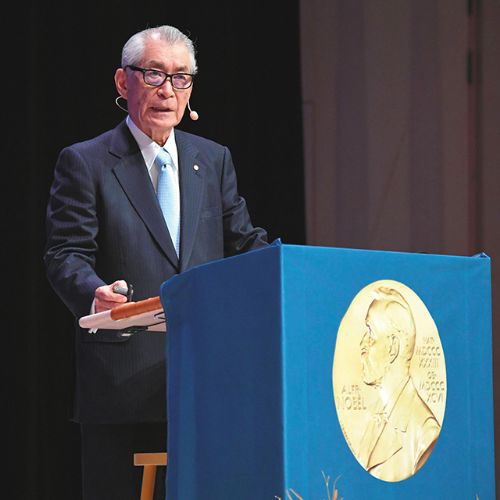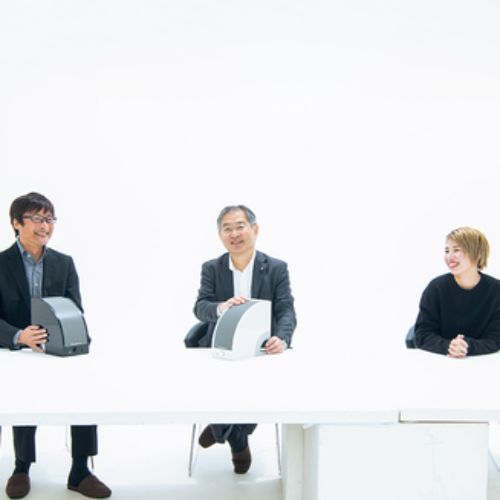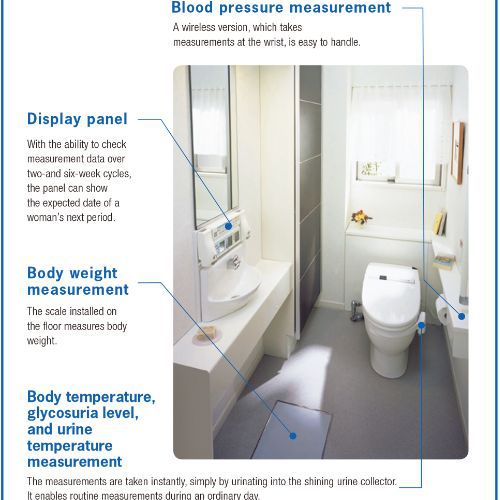Using toilets as health monitors and detecting illnesses early from a single strand of hair— such advances show promise for the future of Japan and the world
Japan has the longest-living population in the world, with some 42% of the population predicted to be 60 or older by 2050. [1]
Japan has thus recently focused on becoming a society that encourages people to live healthier lives as they age. The key is health management and diagnostic technologies that are indispensable for heading off diseases before they strike. Unprecedented concepts are being researched and developed to perform those tasks in a painless, relaxed way.
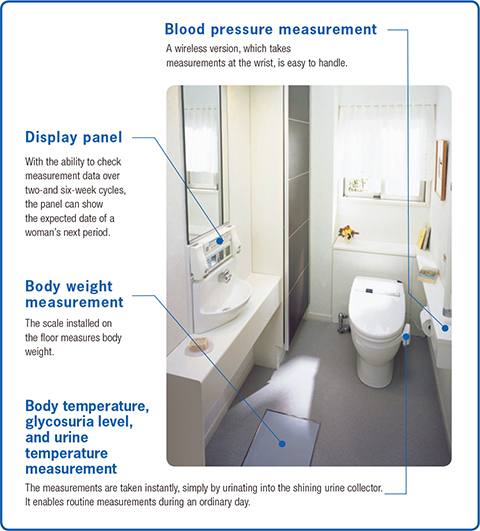
Intelligence Toilet: Designed to check your health, it also fits comfortably into residential spaces.
The measurement log can be accessed at the toilet as well as by personal computer (prototype not available for purchase).
One example is a new toilet being developed, through a process of trial and error, by TOTO, a company that entered the field in the early 1990’s, setting the goal of health management at the toilet. In 2005, in collaboration with a housing manufacturer Daiwa House Industry, it unveiled an “Intelligence Toilet” able to measure urine sugar, blood pressure, body fat, and body weight, and designed for an average home. Since then, it has developed a model that measures body mass index (BMI) and urine temperature (indicative of the body’s core temperature), which enables a woman to predict her period and ovulation days. Sales have already ended, but its DNA has been passed down.
Currently, TOTO is selling the FlowSky uroflowmetry, aimed at medical institutions, and capable of measuring the volumetric flow rate of urine during urination, which are important parameters for diagnosing lower urinary tract symptoms. “Our research is guided by the idea that data about the body obtained during toilet visits is useful for a healthful and meaningful active life,” says Michihiko Torio, manager of the Medical Equipment Business Promotion Section at TOTO. Optimistic about the future of health management by toilet technology, Torio says, “Without a doubt, the way is opening up. We want to pursue possibilities that will serve society.”
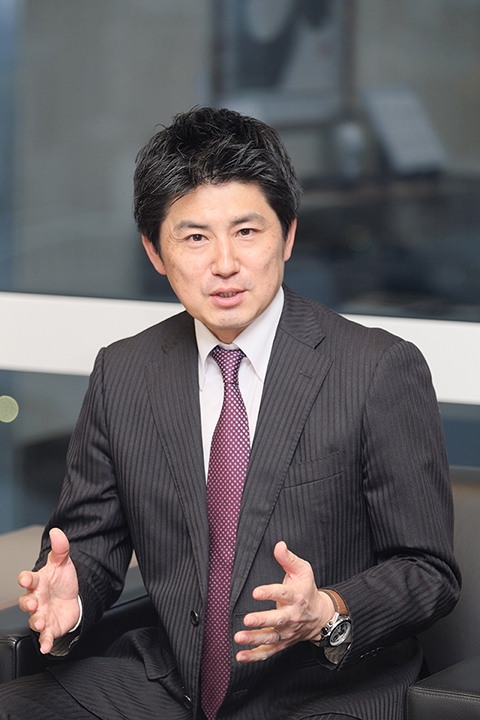
Michihiko Torio After finishing the graduate school of Kyushu University, he joined TOTO in 1994.
Manager, Restroom Business Planning Division, Medical Equipment Business Promotion Section of TOTO, Ltd.
Another approach to painless, casual health check-ups may develop from the hair on our heads, each only 0.1mm in diameter (around 0.004 inches). Takashi Tsuji of the RIKEN Center for Biosystems Dynamics Research says, “We’re looking at a society that can make health check-ups by hair in three years time, and diagnose disease in five years.”
Tsuji has been investigating treatments to regenerate hair over many years. The hair of the head, which is an aggregation of dead cells originally produced by cell division of hair matrix cells deep in a follicle, grows about 1cm (0.4 inches) per month. That means that health data, as a chronological log, is stored in the 1-cm segment closest to the root for the most recent month, and in the first 12cm (5 inches) for one year.
Tsuji believes that an analysis of both the shape of the hair and the status of substances such as the proteins contained inside, and using it as a chronological series of health data, will let us notice changes in health more quickly, and facilitate earlier discovery and response to such conditions as cancer and diabetes.
At the end of 2017, a group of businesses that agreed with Tsuji’s ideas formed the “Hair Diagnostic Consortium” to develop a hair diagnostics project involving 10 different laboratories in RIKEN, with participation by 21 firms and organizations. The initial goal is to build a database by collecting the hair health data of 10,000 people in two years, with the aim of the social implementation of health services and disease diagnosis by hair diagnostics. “By developing systems for hair diagnostics and giving individuals accurate health indicators, we can then head off diseases by utilizing health services based on scientific evidence,” Tsuji says. “The goal is to help people stay healthy longer, and thereby bring about a society where people enjoy healthy, long lives.”
As Japan undergoes the phenomenon of super-aging in the near future, the concept of painless healthcare may indeed become an important support for such a society.
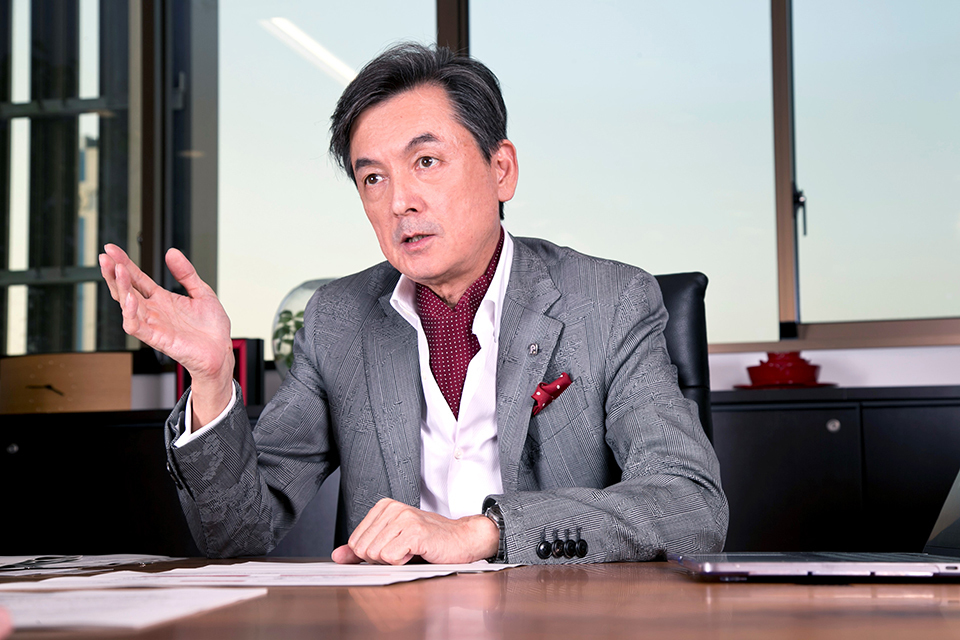
Takashi Tsuji, Ph.D
Team Leader, Laboratory for Organ Regeneration, Riken Center for Biosystems Dynamics Research He became a professor in 2007 at the Science University of Tokyo, and began his present job in 2014.
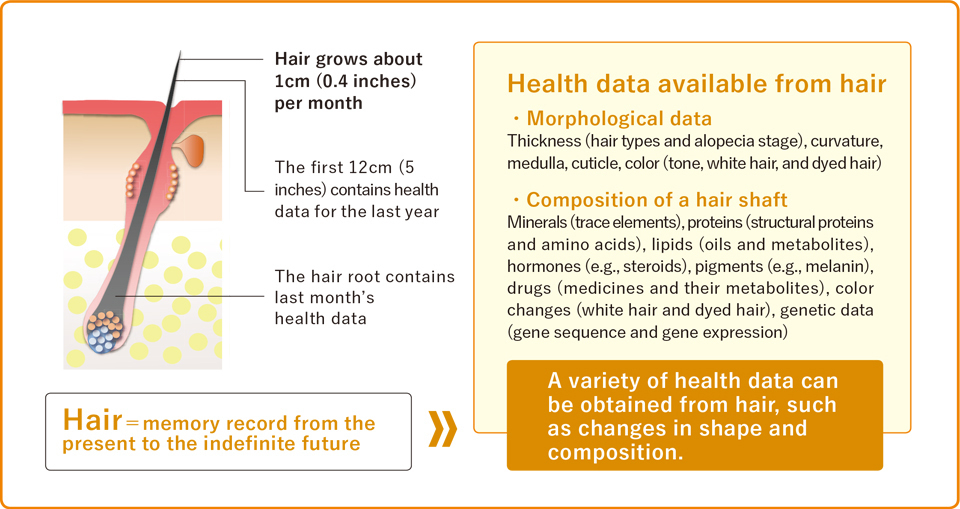
Hair is a “memory medium” that stores information about the condition of the body over time.
[1] From the 2017 United Nations study on World Population Ageing.


























